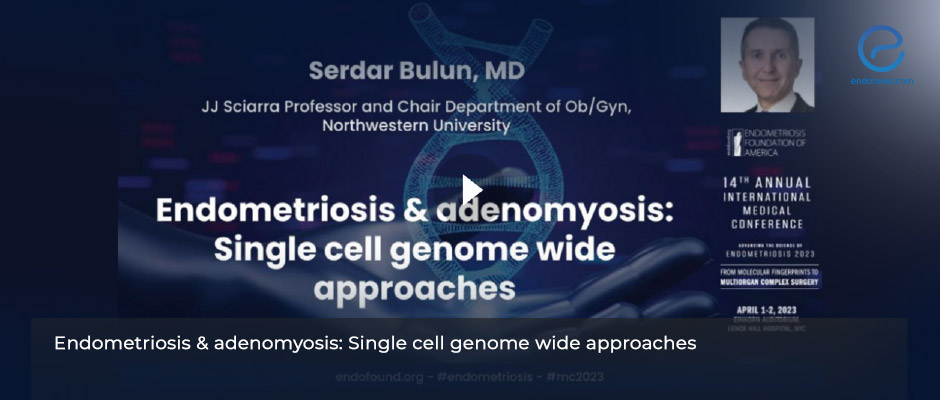Epigenetic defects of stromal cells in endometriosis and adenomyosis lead to estrogen sensitivity
May 2, 2023
Endometriosis and adenomyosis both have somatic KRAS mutations
Key Points
Highlights:
- Professor Bulun presented his speech entitled "Endometriosis & adenomyosis: Single-cell genome-wide approaches" at the Annual International Medical Conference of the Endometriosis Foundation of America held in New York on April 1-2, 2023.
Importance:
- Adenomyosis and endometriosis are estrogen-dependent disorders that are closely related.
- Both endometriotic and adenomyotic stromal cells have a large number of epigenetic abnormalities involving DNA methylation, histone modification, and miRNA expression.
- The epigenetic defects of stromal cells in endometriosis and adenomyosis lead to excessive estrogen formation, abnormal estrogen action via estrogen receptor-b, and progesterone resistance.
What's done here:
- This is a critical review of molecular alterations in two closely related entities, endometriosis and adenomyosis that could widen current approaches in pathogenetic and therapeutic fields.
Outline:
- Events such as pregnancy disturbing the endo-myometrial junction such as pregnancy increases the risk of adenomyosis.
- Altered endometrial cells get entrapped in the myometrium and survive in this ectopic location.
- In the case of endometriosis, altered endometrial cells invade peritoneal surfaces leading to peritoneal endometriosis or involuting corpus luteum cyst leading to endometrioma via retrograde menstruation.
- Activating somatic mutations in KRAS are encountered as the key events in both endometriosis and adenomyosis.
- The stromal cells of both tissues show epigenetic alterations that lead to excessive estrogen formation, abnormal estrogen action via estrogen receptor-b, and progesterone resistance.
Lay Summary
Serdar Bulun, MD, J.J. Sciarra Professor and Chair Department of Obstetrics and Gynecology, Northwestern University, Feinberg School of Medicine, Chicago, Illinois has delivered a conference on “Endometriosis and adenomyosis: single-cell genome-wide approaches” at the Annual International Medical Conference of the Endometriosis Foundation of America held in New York on April 1-2, 2023.
Professor Bulun reviewed the molecular alterations in two closely related entities, endometriosis, and adenomyosis which could widen our current approaches in these enigmatic disorders that would affect the current pathogenetic and therapeutic approaches.
It is a well-known fact that two estrogen-related disorders adenomyosis and endometriosis both possess stromal cells with a large number of epigenetic abnormalities involving DNA methylation, histone modification, and miRNA expression.
Events disrupting the endo-myometrial junction such as pregnancy, increase the risk of adenomyosis so that altered endometrial cells either get entrapped in the myometrium and survive in this ectopic location.
Altered endometrial cells via retrograde menstruation invade peritoneal surfaces leading to peritoneal endometriosis or involuting corpus luteum cyst leading to endometrioma.
In both endometriosis and adenomyosis activating somatic mutations in KRAS are encountered as the main step. However, endometriotic epithelial cells also show several other mutated genes. In adenomyosis, epithelial KRAS mutations are almost exclusively found in the great majority of the lesions.
The stromal cells of both tissues show epigenetic alterations that lead to excessive estrogen formation, abnormal estrogen action via estrogen receptor-b, and progesterone resistance.
endometriosis adenomyosis molecular mutations Dr Bulun endofound conference k-ras DNA methlation histone modification

